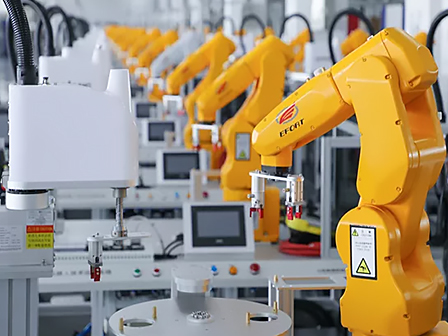In the realm of mechanical engineering, heavy-duty reducers play a critical role in various industrial applications. These devices are designed to reduce the speed of motors while increasing torque, making them vital in heavy machinery and equipment. This article explores the significance, types, applications, and future trends of heavy-duty reducers, shedding light on their indispensable role in modern manufacturing and industry.
What are Heavy-Duty Reducers?
Heavy-duty reducers, also known as gear reducers or gearboxes, are mechanical devices used to decrease the rotational speed of an input shaft while simultaneously increasing its torque. These reducers are essential in applications where high torque and low speed are required, ensuring efficiency and reliability in heavy machinery operations.
Key Functions
Speed Reduction: Heavy-duty reducers take high-speed input from motors and reduce it to a more manageable output speed, allowing machinery to operate efficiently.
Torque Increase: By reducing speed, these devices increase the output torque, enabling machines to perform heavy lifting and operate under significant loads.
Direction Change: Many heavy-duty reducers can alter the direction of rotation, providing flexibility in how machinery operates.
Load Distribution: They help distribute loads evenly across machinery components, reducing wear and extending the lifespan of equipment.
Importance of Heavy-Duty Reducers
The significance of heavy-duty reducers in industrial applications cannot be overstated. Here are some key reasons why they are essential:
1. Efficiency Enhancement
By optimizing the speed and torque of motors, heavy-duty reducers enhance the overall efficiency of machinery. This leads to reduced energy consumption and lower operational costs, making them a vital component in energy-intensive industries.
2. Increased Performance
Heavy-duty reducers allow machinery to operate at optimal performance levels, enabling them to handle heavier loads and perform more demanding tasks. This capability is crucial in sectors like manufacturing, mining, and construction.
3. Durability and Longevity
Designed to withstand harsh operating conditions, heavy-duty reducers are built to last. Their robust construction minimizes wear and tear, extending the operational lifespan of both the reducer and the machinery it powers.
4. Versatility in Applications
Heavy-duty reducers are versatile and can be used across various industries, including automotive, aerospace, construction, and energy. Their adaptability makes them suitable for a wide range of applications, from conveyor systems to drilling rigs.
Challenges in the Heavy-Duty Reducer Market
While heavy-duty reducers are essential in various applications, the market faces several challenges:
1. Technological Advancements
As industries evolve, there is a constant demand for more efficient and advanced reducers. Manufacturers must invest in research and development to keep pace with technological advancements and meet changing market needs.
2. Cost Pressures
The rising costs of raw materials and manufacturing processes can impact the pricing of heavy-duty reducers. Manufacturers need to find ways to optimize production costs without compromising quality.
3. Competition
The heavy-duty reducer market is highly competitive, with numerous players offering similar products. Companies must differentiate themselves through innovation, quality, and customer service to maintain a competitive edge.
4. Maintenance and Servicing
Heavy-duty reducers require regular maintenance to ensure optimal performance. Providing adequate servicing and support can be challenging for manufacturers, particularly in remote or harsh environments.


 English
English Russian
Russian Spanish
Spanish Italian
Italian Arabic
Arabic Korean
Korean German
German Japanese
Japanese Vietnamese
Vietnamese Turkish
Turkish


